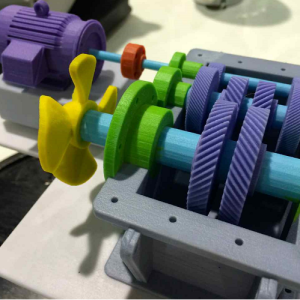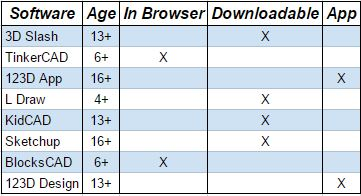In my decades-long teaching career, I have some experience teaching science and math concepts, though I preferred teaching literature and grammar. But now that Science, Technology, Engineering, and Mathematics (STEM) curricula is all the rage across the US, I must admit that it has become more appealing to teach those subjects too. What makes STEM education especially attractive for educators, parents, and students is the hands-on technology, like 3D printing, that integrates fields of study into concrete lesson plans. As this aspect of curriculum development grows, so do our choices for software and other teaching materials. But what’s out there and what should we be using?
Fortunately, Sculpteo has compiled a list of beginner and child-friendly software options to make these choices easier so we can dive into the process of teaching and learning new technology. Sculpteo also talked to Autodesk’s Sarah O’Rourke about what she’s observed in her experience in Engineering and Technology education, and how to get started:
“In my role at Autodesk, I focus on working with students, teachers and educators to bring project based-learning into the classroom. The easiest way for many to get started is with Tinkercad. Since it is an intuitive tool to learn the basics of design with solid modeling, kids of all ages have immediate success.”
 If you haven’t heard of Tinkercad yet, it sounds like it’s a great place to start. Once you know what software you want to use, how do you go about integrating it into the curriculum at your school? O’Rourke also offers us sound advice on integrating 3D design and printing. She recommends Project Ignite, a 3D design and printing learning platform. She also recommends Sculpteo’s learning center and getting to know your own local resources: libraries, Makerspaces, FabLabs, etc. In terms of where to begin within the curriculum, O’Rourke had a few things to say about this topic:
If you haven’t heard of Tinkercad yet, it sounds like it’s a great place to start. Once you know what software you want to use, how do you go about integrating it into the curriculum at your school? O’Rourke also offers us sound advice on integrating 3D design and printing. She recommends Project Ignite, a 3D design and printing learning platform. She also recommends Sculpteo’s learning center and getting to know your own local resources: libraries, Makerspaces, FabLabs, etc. In terms of where to begin within the curriculum, O’Rourke had a few things to say about this topic:
“It’s really easy to start with math or geometry. Especially with Tinkercad, where it’s based on solid modeling. Teachers can visually connect the concepts of volume, width and height easily. This helps students with various learning types to connect in a new way. It also helps them remember what they just learned. I also think there are great advances for 3D design and 3D printing for science or anatomy…Alignment to the current standards will be a huge help for these types of emerging technologies to be adopted in the classroom as a faster pace.”
Not only has Sculpteo offered a comprehensive list of relevant software programs for beginners that you can retrieve here, they’ve also made a handy chart (see below) that breaks down options by age, app and browser status, and downloadability. Out of eight software choices, two are for children 3 and over, and six target the 13+ crowd.
O’Rourke also reminds educators not to get in too deep without trying out some options. She recommends Sculpteo as a resource in this respect:
“3D printing services, like Sculpteo, are great for educators getting started with 3D printing. Before making the investment in the hardware, printing services allow them to try it out. Many also offer discounts to schools too. Printing Service providers also have more material types for schools to choose from than your typical desktop printer.”
As 3D printing becomes more common, like all other technology, the youth will lead the way. And thanks to resources focused on new learners, we can accelerate teaching, learning, and most importantly, making cool and practical 3D printed things for the benefit of all. Discuss this story in the Child 3D Printing Education forum thread on 3DPB.com.
Subscribe to Our Email Newsletter
Stay up-to-date on all the latest news from the 3D printing industry and receive information and offers from third party vendors.
You May Also Like
3D Printing Unpeeled: New Arkema Material for HP, Saddle and Macro MEMS
A new Arkema material for MJF is said to reduce costs per part by up to 25% and have an 85% reusability ratio. HP 3D HR PA 12 S has been...
3D Printing News Briefs, January 20, 2024: FDM, LPBF, Underwater 3D Printer, Racing, & More
We’re starting off with a process certification in today’s 3D Printing News Briefs, and then moving on to research about solute trapping, laser powder bed fusion, and then moving on...
3D Printing Webinar and Event Roundup: December 3, 2023
We’ve got plenty of events and webinars coming up for you this week! Quickparts is having a Manufacturing Roadshow, America Makes is holding a Member Town Hall, Stratafest makes two...
Formnext 2023 Day Three: Slam Dunk
I’m high—high on trade show. I’ve met numerous new faces and reconnected with old friends, creating an absolutely wonderful atmosphere. The excitement is palpable over several emerging developments. The high...

































